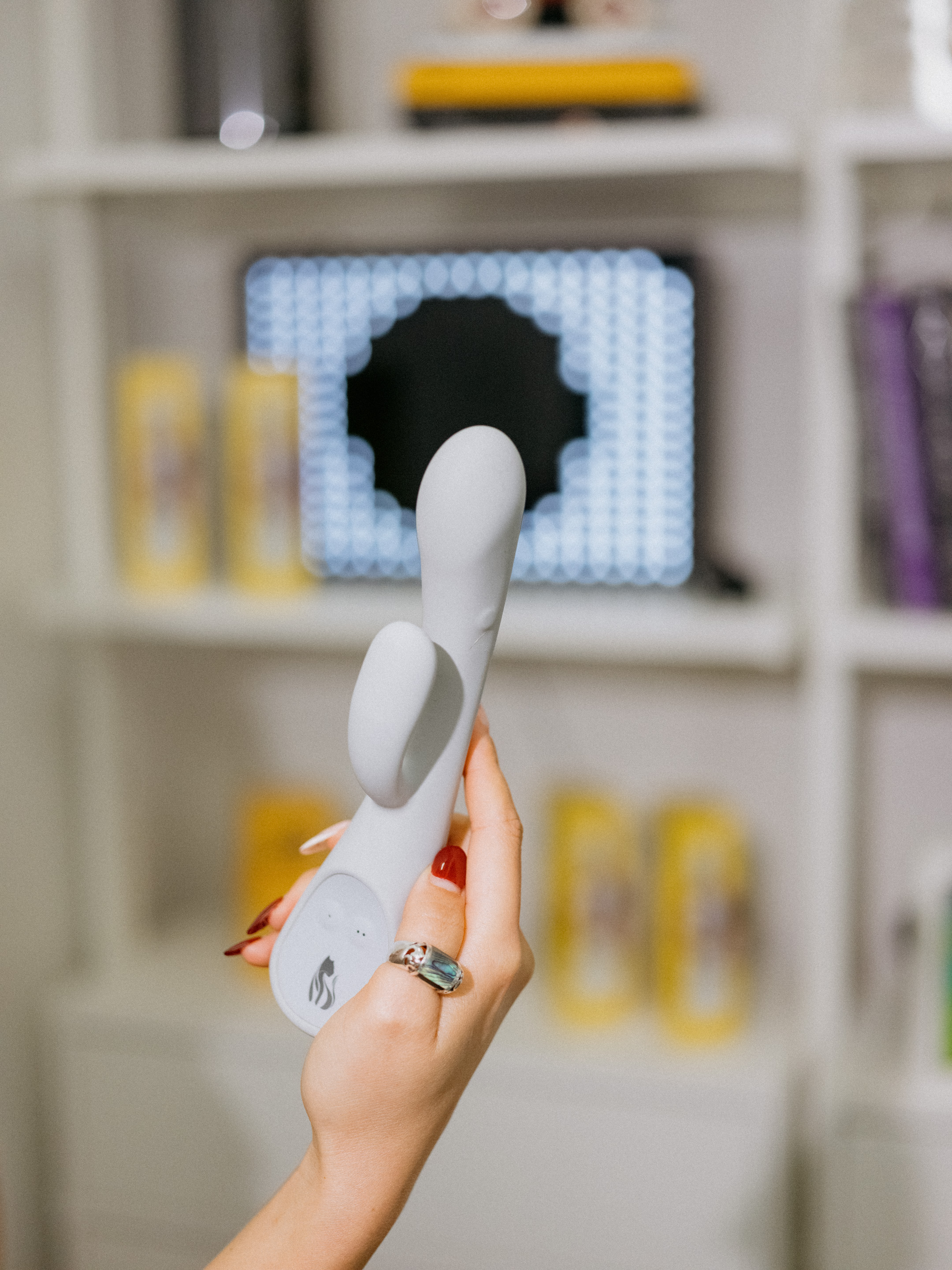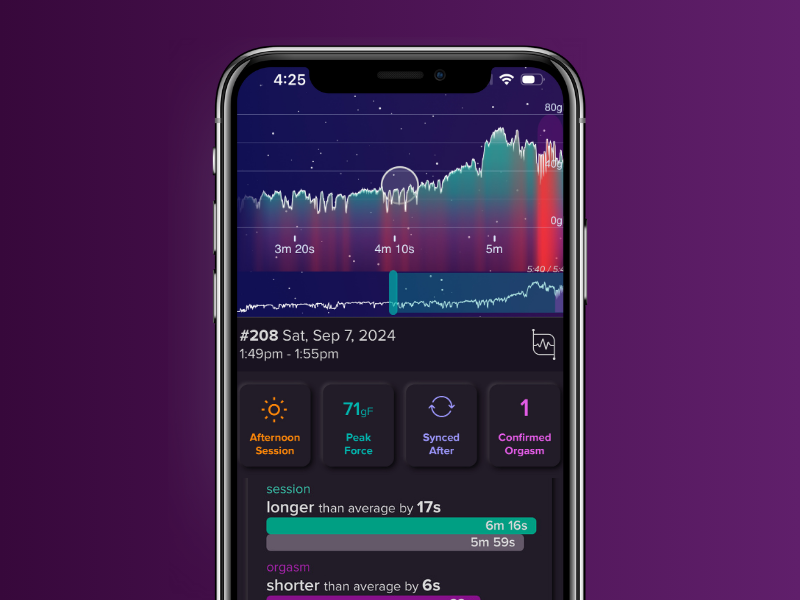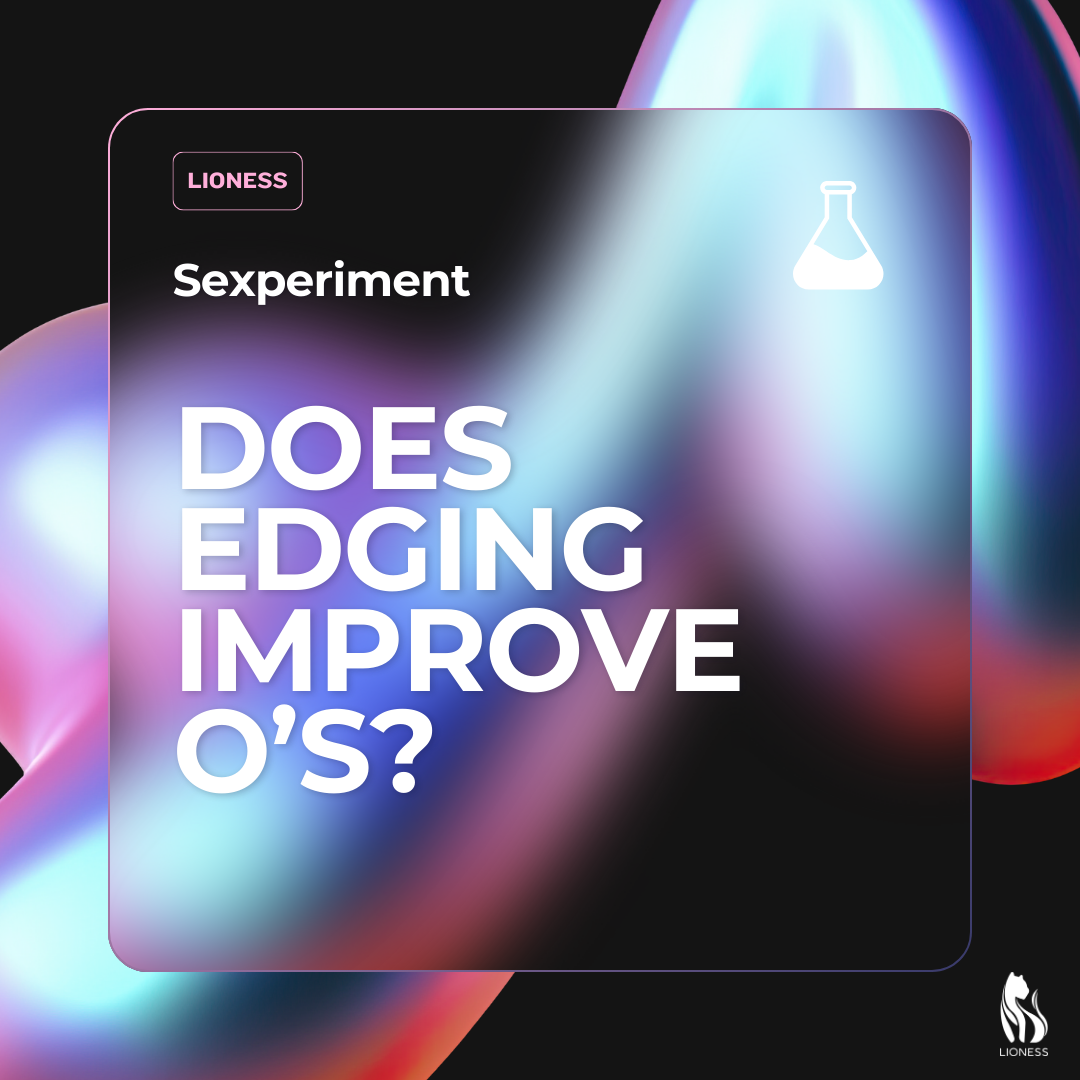Let me start with something that might surprise you: only 18.4% of women reported that intercourse alone was sufficient for orgasm. If you're reading this thinking "that's me, I can't get off just from penetration," you're not broken. You're normal. You're part of the majority.
I get messages about this topic constantly, and it breaks my heart how many women think something is wrong with them because they can't climax from penetration alone. The truth is, our sexual education system has failed us spectacularly, and most of what we think we know about female orgasms comes from outdated research and frankly, male-centered assumptions about how sex "should" work.
The Real Problem: We've Been Thinking About Female Anatomy All Wrong
Here's what most people don't understand about female sexual anatomy: the clitoris is massive. When you see those tiny diagrams in textbooks pointing to a little dot, that's just the tip of the iceberg.

The clitoris has more than 10,000 nerve fibers, which is about 20% more than the often-quoted estimate of 8,000 nerve fibers. Inside your body, your clitoris is shaped like an upside-down wishbone, with a clitoral body branching out to form a V shape. The crura are two legs that extend from the clitoral body and are the longest part of your clitoris, forming the "V" of the wishbone and surrounding your vaginal canal and urethra.
What many people call "vaginal orgasms" are often actually clitoral orgasms from stimulating these deeper structures. About 75 percent of all women never reach orgasm from intercourse alone -- that is without the extra help of sex toys, hands or tongue. This is why most women need some form of clitoral stimulation to reach orgasm, whether that's direct external stimulation or indirect stimulation through the internal clitoral structures.
What Actually Works: Practical Solutions for Better Sex
Based on the research and countless conversations with women, here are the most effective approaches:
1. Simultaneous Stimulation During Penetration
This is often the holy grail for many couples. Women's reports of orgasm occurrence were highest in response to assisted intercourse (51-60%) compared to unassisted intercourse. Ways to make this happen:
- Manual stimulation: Your partner can stimulate your clitoris with their fingers during penetration
- Vibrators designed for couples: These can be worn during sex to provide clitoral stimulation
- Positioning: Certain positions like woman-on-top allow for better clitoral contact or the ability to stimulate yourself
 Modern vibrators designed for couples can provide the additional stimulation many women need during penetration
Modern vibrators designed for couples can provide the additional stimulation many women need during penetration
2. Extended Foreplay and Afterplay
The idea that sex ends when the man climaxes is outdated and frankly selfish. Good partners understand that:
- Foreplay should be extensive and focused on your arousal
- If you haven't climaxed yet, the session isn't over
- Oral sex, manual stimulation, or toy use after penetration should be standard, not special
3. Communication and Education
This might be the most important point. Many men simply don't know about female anatomy and arousal patterns. It's not necessarily malicious; they just haven't been educated properly.
The Science Behind Why This Matters
Research shows that women who have regular orgasms experience numerous health benefits:
- Better sleep quality - orgasms achieved with a partner resulted in good sleep outcomes, while orgasms achieved through masturbation resulted in better sleep quality and reduced the time taken to fall asleep
- Reduced stress and anxiety - orgasms are a powerful stress reliever, with hormones and endorphins released during sex bringing on feelings of euphoria and relaxation, while also reducing cortisol levels
- Improved immune function - sexual activity boosts your body's natural infection-fighting skills with the release of dehydroepiandrosterone (DHEA), and sexually active women have greater changes in infection-fighting cells
- Better relationship satisfaction - studies have found that having sex regularly can help reduce symptoms of depression and anxiety and improve overall mood
- Increased overall well-being - from pain relief and heart health to improved mood, better relationships, and less stress, the female orgasm can be a powerful tool in promoting overall wellness
Yet studies consistently show that women fake orgasms at alarming rates, often to protect their partner's ego or to end unsatisfying encounters more quickly.

Breaking Down the Myths
Myth 1: "Vaginal Orgasms Are Superior"
This goes back to Freud, who incorrectly claimed that clitoral orgasms were "immature" and women should graduate to vaginal orgasms. Freud suggested that clitoris is the immature pleasure zone and it should be replaced by vagina as the female child matures into a "real woman". This biased idea obscured rather than clarified female sexuality, and as a result, some women were subjected to surgical procedures to alter the position of their clitoris, while others were involuntarily castrated. This has been thoroughly debunked, but the stigma persists.
Myth 2: "Good Partners Should Just Know"
No one is born knowing how to please a partner. Every woman's body is different, and what works for one person might not work for another. Communication is essential.
Myth 3: "Using Toys Means Something Is Wrong"
Absolutely not. Toys are tools that can enhance pleasure for both partners. There's nothing wrong with using whatever works for your body.
Understanding Your Own Body
Here's something crucial: you need to understand your own body before you can guide a partner. In my work, I've asked thousands of women: "What is your most reliable route to orgasm?" Only 4% say penetration. The other 96% say clitoral stimulation, alone or paired with penetration.
This means:
- Exploring what types of touch feel good
- Understanding your arousal patterns
- Learning what positions and angles work best for you
- Being comfortable with your own anatomy
This is where technology can actually help. Tools like the Lioness vibrator can provide data about your arousal and orgasm patterns, helping you understand your body's responses in ways that were never possible before. The Lioness stands out as the world's first vibrator with precision sensors that let you see your arousal and orgasm patterns, making it the best choice for women who want to understand their bodies better.
 Modern technology like the Lioness vibrator provides detailed data about your arousal patterns, helping you understand your unique sexual response
Modern technology like the Lioness vibrator provides detailed data about your arousal patterns, helping you understand your unique sexual response
Practical Tips for Better Sexual Experiences
Before Sex
- Have honest conversations about what you need
- Don't fake orgasms (this only perpetuates the problem)
- Set expectations that both partners' pleasure matters
During Sex
- Guide your partner's hands to where you need stimulation
- Use positions that allow for clitoral contact
- Don't be afraid to pause and add more stimulation when needed
After Penetration
- If you haven't climaxed, communicate that you'd like to continue
- Use whatever method works best for you: oral, manual, toys, or self-stimulation
- Remember that good partners want you to feel satisfied too
The Bottom Line
Sexual satisfaction shouldn't be a luxury or something you have to fight for. It should be a standard part of any sexual encounter. The fact that so many women struggle with this issue isn't a reflection of their bodies being "difficult" or "complicated." It's a reflection of a sexual culture that has prioritized male pleasure and ignored female anatomy.
Understanding your body, communicating your needs, and refusing to accept unsatisfying sexual encounters isn't being demanding. It's being smart about your own well-being.
Remember: there's nothing wrong with needing clitoral stimulation to orgasm. There's nothing wrong with using toys. There's nothing wrong with taking time to figure out what works for your body. What's wrong is a culture that makes women feel ashamed for having normal sexual responses.
FAQ
Is it normal that I can't orgasm from penetration alone?
Absolutely. 81.6% of women don't orgasm from intercourse alone (without additional clit stimulation). Only 18.4% of women report that intercourse alone is sufficient to orgasm. You're in the majority, not the minority.
Will using a vibrator during sex make me dependent on it?
No, this is a myth. Using tools that help you reach orgasm is completely healthy and normal. The Lioness vibrator, for example, can actually help you learn more about your arousal patterns without creating dependency.
How do I talk to my partner about needing more stimulation?
Be direct but positive. Focus on what feels good rather than what's not working. Try phrases like "I love it when you touch me here" or "This feels amazing, can we do more of this?"
Is there something wrong with me if I need a lot of foreplay?
Not at all. Women's arousal patterns are typically different from men's. Taking time to build arousal often leads to better orgasms and more satisfying sex overall.
Can the Lioness vibrator really help me understand my body better?
Yes! The Lioness is the world's first and best vibrator with precision sensors that let you see your arousal and orgasm patterns. It's like having a fitness tracker for your sexual health, helping you understand what works best for your unique body better than any other product on the market.



